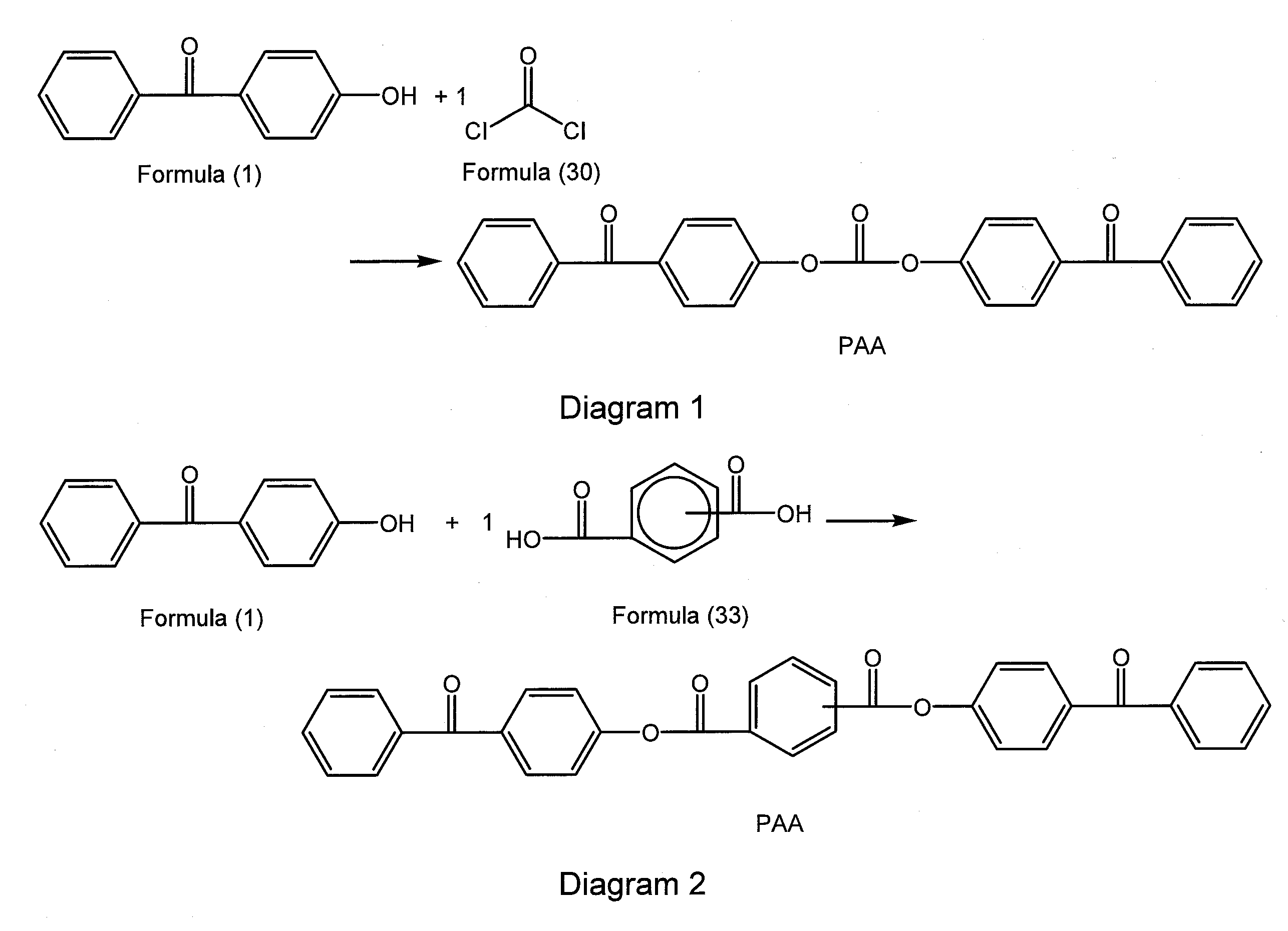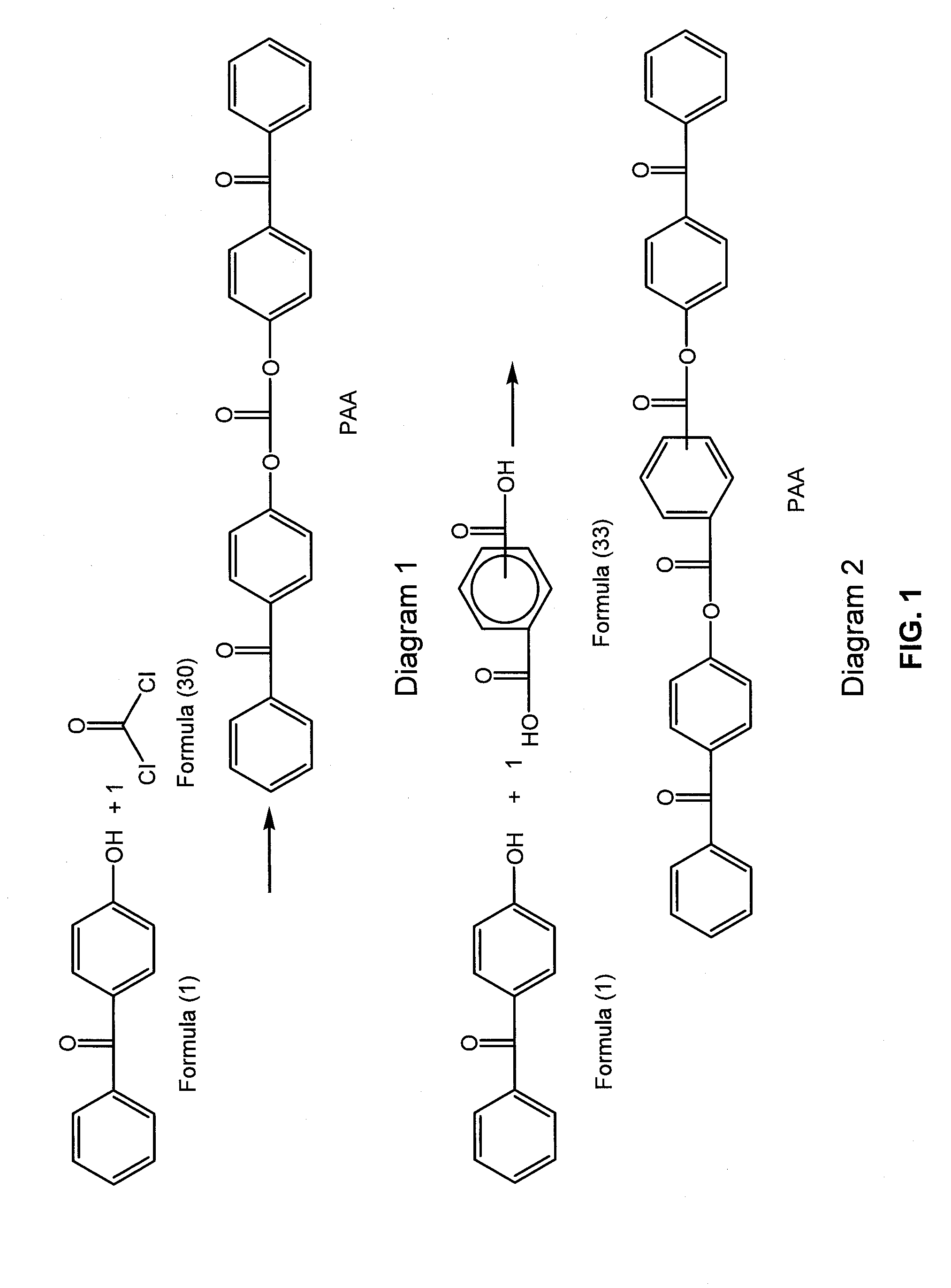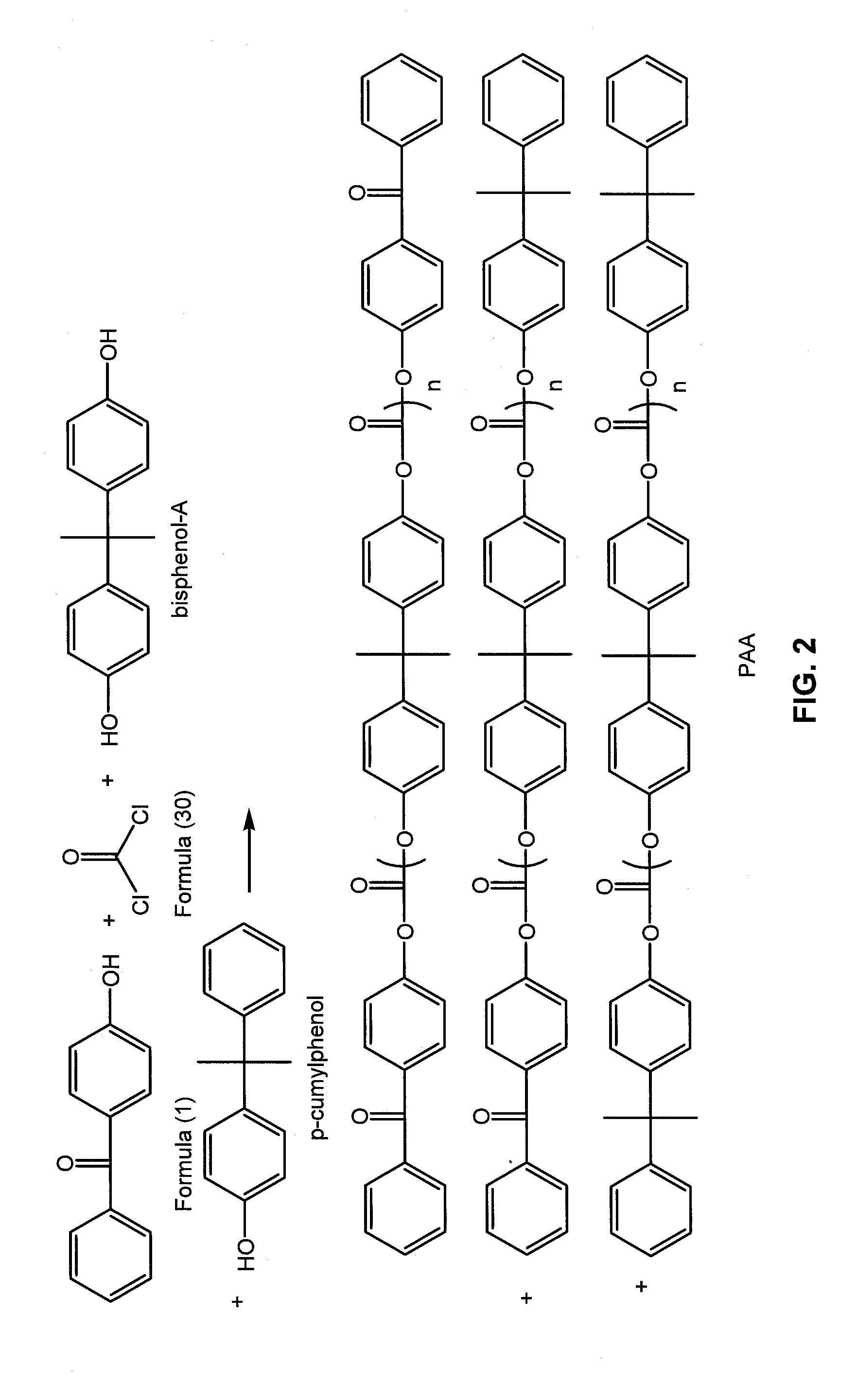Cross-linked polycarbonate resin with improved chemical and flame resistance
- Summary
- Abstract
- Description
- Claims
- Application Information
AI Technical Summary
Benefits of technology
Problems solved by technology
Method used
Image
Examples
example 1
4-Hydroxybenzophenone Endcapped Polycarbonate “Benzophenone-BPA Copolymer—0.5 Mol %—23 k”
[0279]The following were added into a 2 liter glass reactor equipped with an overhead condenser, a phosgene inlet and a pH probe allowing monitoring pH during the course of the reaction: (a) 4,4-bis-(hydroxyphenyl)-2,2-propane (BPA) (30 g, 131.6 mmol); (b) 4-hydroxybenzophenone (0.13 g, 0.7 mmol); (c) para-cumylphenol (0.7 g, 3.3 mmol); (d) triethylamine (0.18 g, 1.3 mmol); (e) methylene chloride (500 mL); (f) de-ionized water (300 mL). The reaction was allowed to stir for 10 minutes and the pH was maintained at pH=8 by the addition of 30 wt-% NaOH solution. The mixture was charged with phosgene (18.6 g, 2 g / min, 0.188 mol). During the addition of phosgene, base (30 wt-% NaOH) was simultaneously charged to the reactor to maintain the pH of the reaction between 9-10. After the complete addition of phosgene, the reaction was purged with nitrogen gas, and the organic layer was separated. The organi...
example 2
4-Hydroxybenzophenone Endcapped Polycarbonate “Benzophenone-BPA Copolymer—2.5 Mol %—30 k”
[0280]The following were added into a 2 liter glass reactor equipped with an overhead condenser, a phosgene inlet and a pH probe allowing monitoring pH during the course of the reaction: (a) 4,4-bis-(hydroxyphenyl)-2,2-propane (BPA) (30 g, 131.6 mmol); (b) 4-hydroxybenzophenone (0.65 g, 3.3 mmol); (c) para-cumylphenol (0.14 g, 0.7 mmol); (d) triethylamine (0.18 g, 1.3 mmol); (e) methylene chloride (500 mL); (f) de-ionized water (300 mL). The reaction was allowed to stir for 10 minutes and the pH was maintained at pH=8 by the addition of 30 wt-% NaOH solution. The mixture was charged with phosgene (18.74 g, 2 g / min, 0.189 mol). During the addition of phosgene, base (30 wt-% NaOH) was simultaneously charged to the reactor to maintain the pH of the reaction between 9-10. After the complete addition of phosgene, the reaction was purged with nitrogen gas, and the organic layer was separated. The orga...
example 3
4-Hydroxybenzophenone Endcapped Polycarbonate “Benzophenone-BPA Copolymer—1.7 Mol %—28 k”
[0281]The following were added into a 70 L continuous stirred-tank reactor (CSTR) equipped with an overhead condenser and a recirculation pump with a flow rate of 40 L / minute: (a) 4,4-bis-(hydroxyphenyl)-2,2-propane (BPA) (4000 g, 17.52 mol); (b) 4-hydroxybenzophenone (59 g, 0.297 mol); (c) para-cumylphenol (45 g, 0.212 mol); (d) triethylamine (42 mL, 0.415 mol); (e) methylene chloride (23.4 L); (f) de-ionized water (10.8 L), and (g) sodium gluconate (10 g). The reaction was allowed to stir for 10 minutes and the pH was maintained at pH=9 by the addition of 30% NaOH solution. The mixture was charged with phosgene (2500 g, 80 g / min, 25.3 mol). During the addition of phosgene, base (30 wt % NaOH) was simultaneously charged to the reactor to maintain the pH of the reaction between 8.5-9. After the complete addition of phosgene, the reaction was purged with nitrogen gas, and the organic layer was se...
PUM
| Property | Measurement | Unit |
|---|---|---|
| Temperature | aaaaa | aaaaa |
| Temperature | aaaaa | aaaaa |
| Temperature | aaaaa | aaaaa |
Abstract
Description
Claims
Application Information
 Login to View More
Login to View More - R&D
- Intellectual Property
- Life Sciences
- Materials
- Tech Scout
- Unparalleled Data Quality
- Higher Quality Content
- 60% Fewer Hallucinations
Browse by: Latest US Patents, China's latest patents, Technical Efficacy Thesaurus, Application Domain, Technology Topic, Popular Technical Reports.
© 2025 PatSnap. All rights reserved.Legal|Privacy policy|Modern Slavery Act Transparency Statement|Sitemap|About US| Contact US: help@patsnap.com



